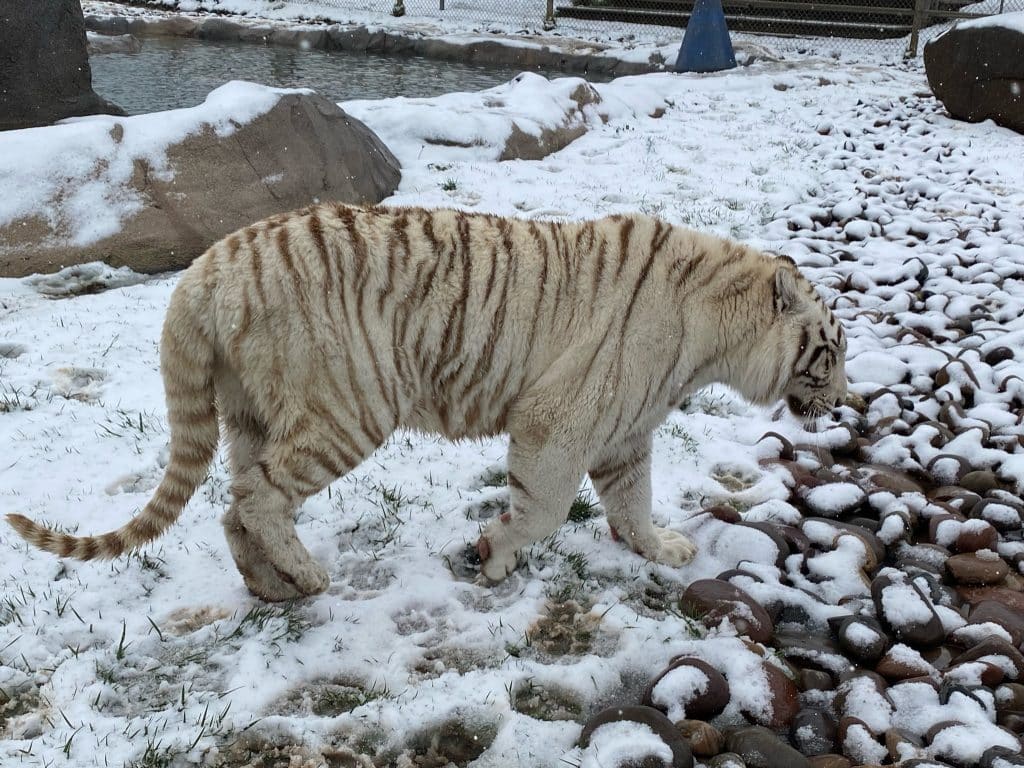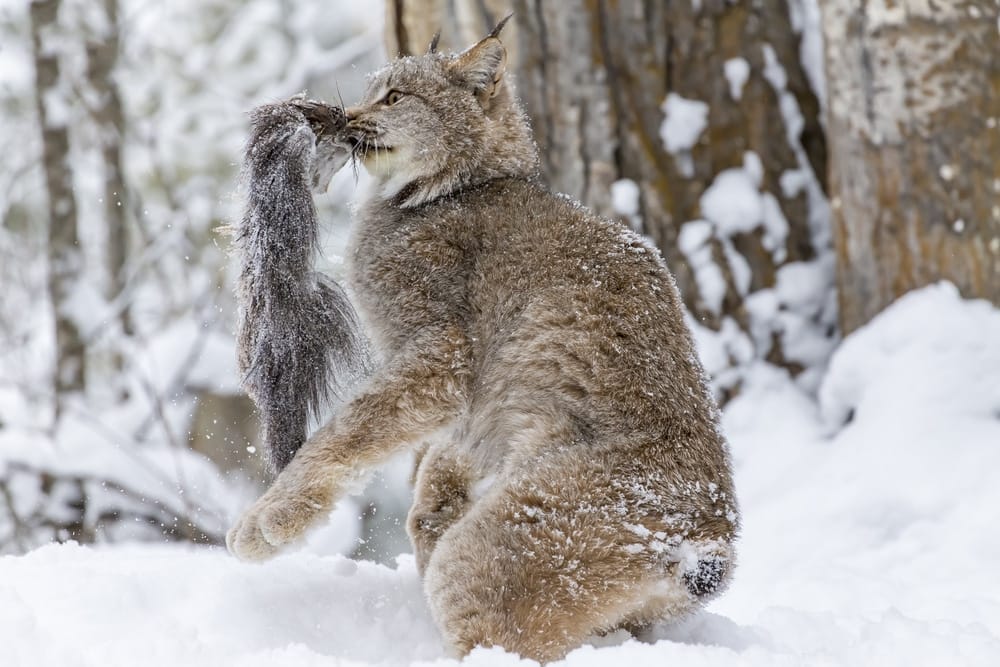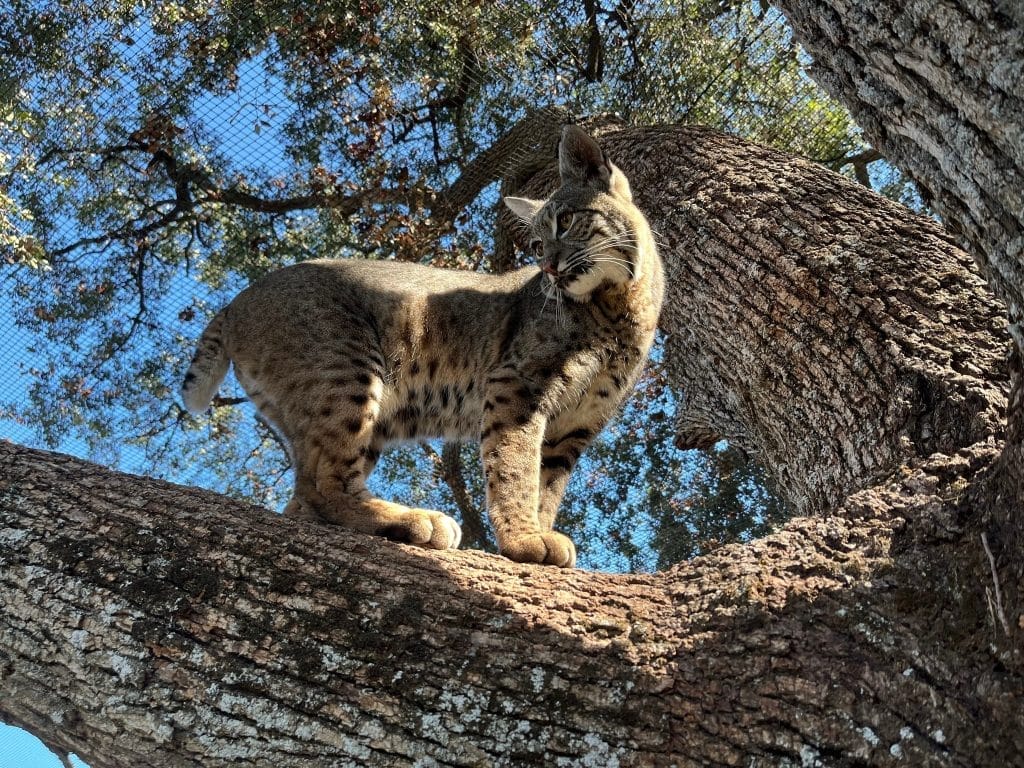Winter Survival in the Wild: How Big Cats & Bears Adapt

Winter can be brutal, even for some of the strongest animals in the wild. Freezing temperatures, scarce food, and harsh conditions can push them to their limits. Unless an animal is strong enough to endure, survival becomes nearly impossible.
That’s why most animals have evolved incredible ways to adapt to sub-freezing temperatures. Let’s explore how animals like lions, tigers, and bears prepare for and endure winter in their natural habitats:
How Big Cats Adapt to Cold Weather
Big cats don't migrate during winter because they’re adapted to their environments. They have:
Thick Fur
One of the most noticeable adaptations is their fur. Wild cats that live in cold climates, like Siberian tigers, Asiatic lions, etc., grow thick, dense coats during the winter. This fur traps air close to their bodies, acting as insulation against freezing temperatures. Snow leopards and jaguars in Southeast Asia also have long, soft fur that protects them from icy winds in the mountains.
Extra Fat
Many big cats build up a layer of fat on their bellies and flanks weeks before winter. The extra fat provides insulation and energy reserves when food is scarce. Siberian tigers, for example, rely on this fat to help them survive long, harsh winters in their habitats across northern Asia.
Seeking Shelter
Big cats instinctively seek out warm and sheltered areas during winter. They may hide in caves, under rock formations, or within dense vegetation to escape the cold. For instance, mountain lions in North America often retreat to lower elevations where temperatures are milder. Bobcats in the United States also seek shelter in secluded dens or covered shelters and may even burrow under the snow to stay warm.

Sleeping More
Some big cats sleep more during the cold weather months. Siberian tigers, for instance, may sleep up to 20 hours a day during winter to conserve energy. This allows them to reduce their need for food while staying warm. But others, like serval cats remain active in the winter because of their high metabolism.
Other Traits That Help Them Tolerate the Cold
Big cats also have other traits that make them well-suited to survive freezing conditions:
- Higher body temperature: Big cats naturally have a higher body temperature than humans, making them more resistant to cold weather.
- The instinct to hunt: Even in winter, their strong hunting instincts drive them to move and stay active. It's what helps them find fresh air and food despite challenging conditions.
How Bears Adapt to Cold Weather

Bears are experts at surviving harsh winters. They use a blend of physical adaptations and instinctive behaviors to endure cold weather and scarce food. Here’s how they do it:
Hibernation
Bear hibernation is one of the most remarkable adaptations in the animal kingdom. If you’ve ever wondered what animals hibernate, bears are one of the most fascinating examples. To prepare for the long, harsh winter, North American bear species like black bears and grizzly bears enter a phase called hyperphagia in the fall. During this time, they eat and drink excessively to build up fat reserves that help sustain them through their long period of hibernation.
While hibernating, bears don’t eat, drink, urinate, or defecate. Their bodies enter a state of extreme conservation, slowing their heart rate, metabolism, and breathing. Despite this, they maintain a high body temperature by reducing blood flow to their limbs while keeping their head and torso warm.
Thick Fur and Fat
Bears, like big cats, rely on thick layers of fur and fat for insulation. Polar bears have two layers of fur—a dense undercoat and a layer of longer, hollow hairs. The hollow fur traps warm air, keeping the bear well-insulated in icy conditions. Their fat layer also helps them stay warm and provides energy during hibernation.
Greasy Coat
A bear’s coat is naturally greasy, which helps it shed water after swimming. This reduces heat loss and keeps them warm in cold, wet environments. Polar bears, in particular, rely on this adaptation when swimming in Arctic waters.
Large Paws
Polar bears have large, wide paws that serve two purposes. On land, they act as snowshoes, helping to distribute the bear’s weight and prevent them from sinking into the deep snow. In water, their paws function as paddles, allowing them to swim efficiently.
Acute Senses
All bears have acute senses crucial for survival, especially in winter. Their sharp eyesight, excellent hearing, and keen sense of smell help them locate food even when buried under snow or ice.
Comparing Winter Survival in the Wild to Sanctuary Care
Wild animals are perfectly adapted to their natural environments – like the big cats thrive in the savannas of Africa while bears brave the cold winters in North America. But sometimes, these animals end up in sanctuaries due to circumstances beyond their control. Our animals are born in captivity. We can add the enrichments we provide to keep them warm.
Sanctuaries are not their natural habitats. But the best ones try to create environments that look like the animals’ natural homes. They offer spacious enclosures, natural elements like trees and water sources, and provide food and medical care that supports their physical and emotional well-being.

Though wild animals belong in the wild, sanctuaries step in to give them a second chance. They provide the care and attention they need to live fulfilling lives while also preserving their natural instincts and behaviors.
The Role of Conservation in a Changing World
Habitat loss is making survival increasingly difficult for wild animals. In Africa and Asia, cheetah, leopard, and lion populations are rapidly shrinking due to deforestation, poaching, and the destruction of their natural habitats.
Siberian tiger habitats are facing similar challenges. As their forests shrink and human development encroaches on their territory, the animals have fewer places to roam and hunt.
Wildlife conservation is more important than ever. We need to protect the wildlife populations, especially vulnerable species, to prevent extinction. You can be a part of this by supporting efforts that preserve their natural habitats and provide care in sanctuaries.
Whether it’s through donations, spreading awareness, or advocating for stronger conservation policies, every action counts. Your support helps ensure these animals can thrive in a safe environment in the wild and protected sanctuaries.Join us in making a real impact—support Lions Tigers & Bears today and help us advocate for and protect these animals for future generations.



